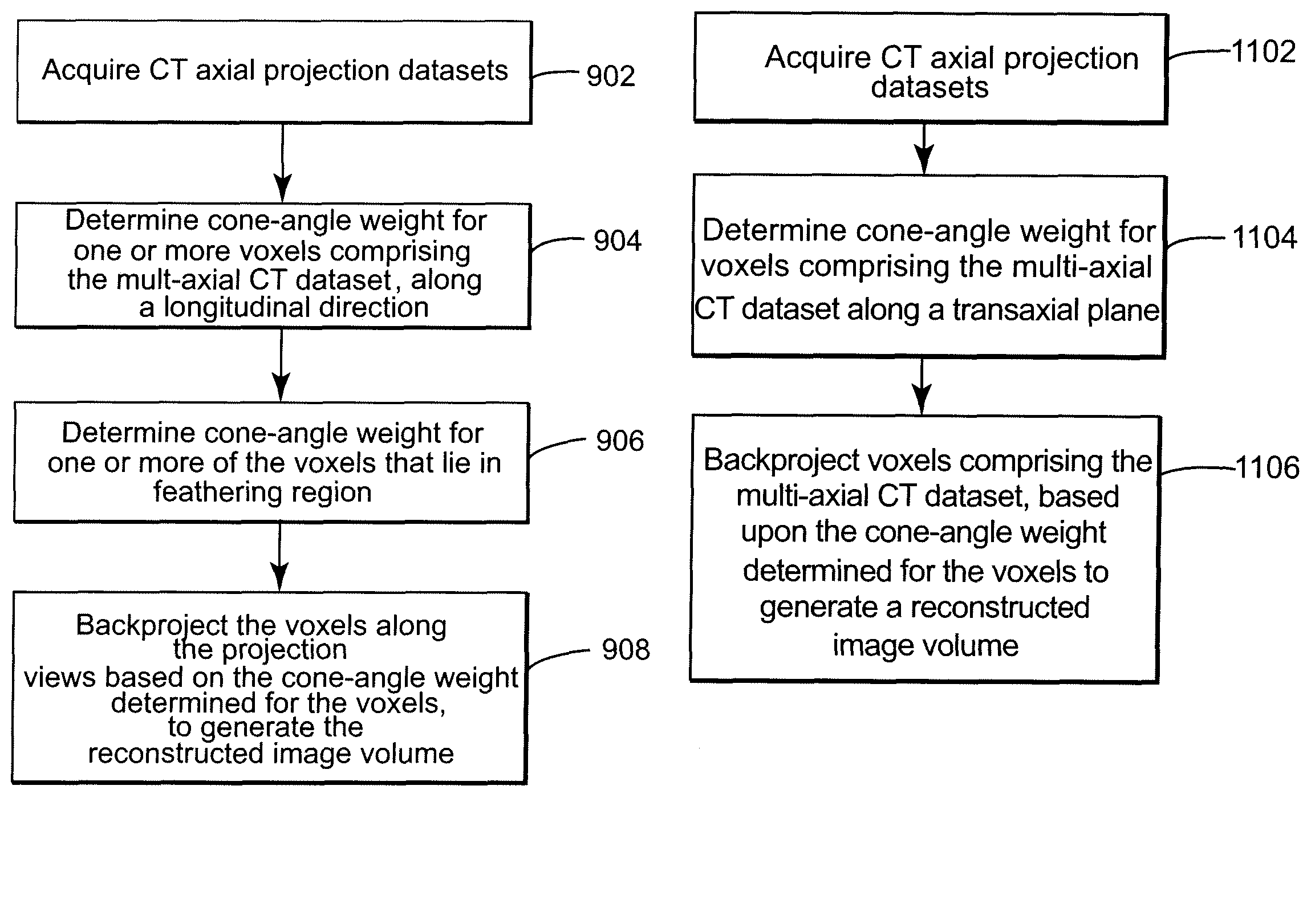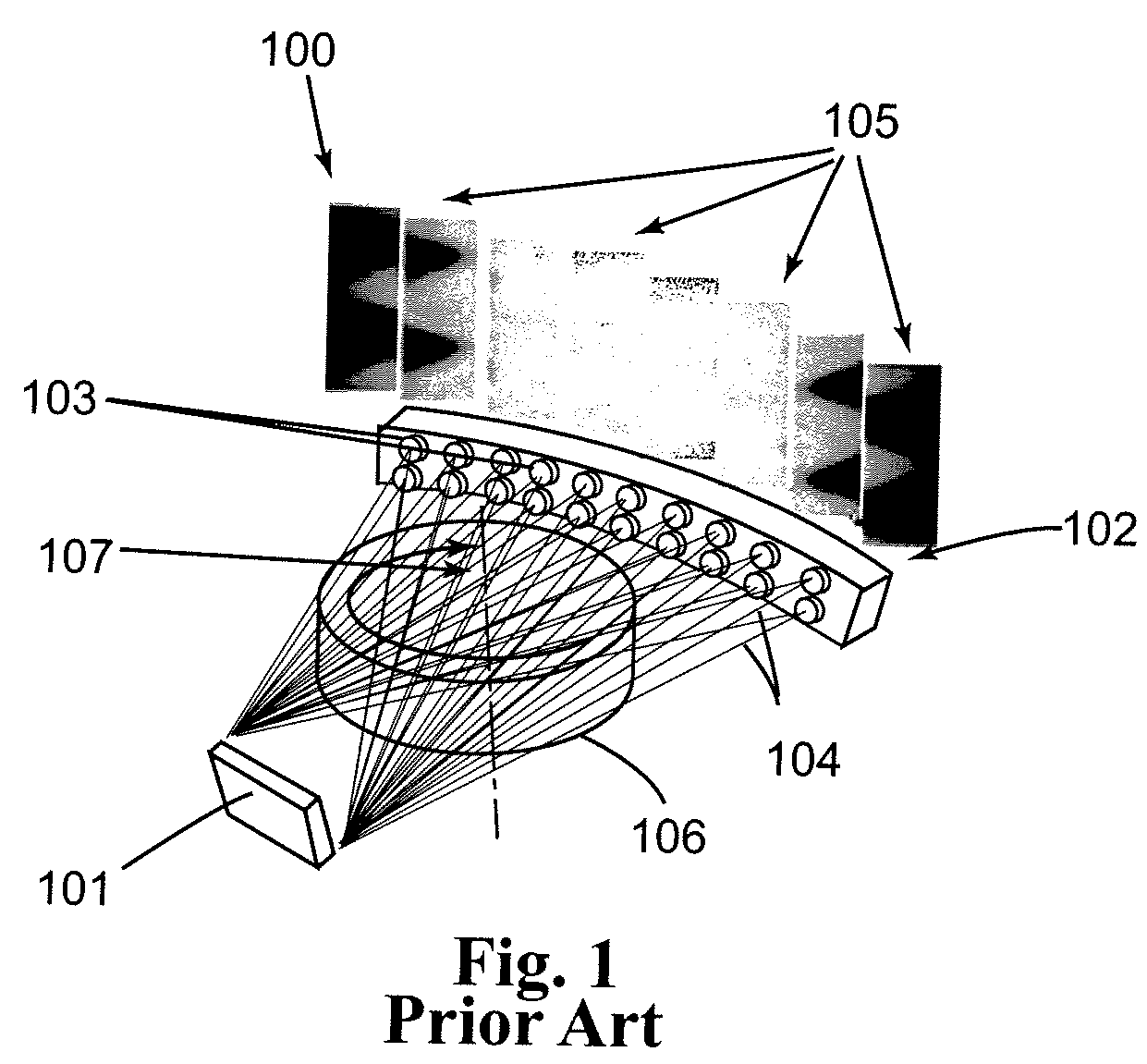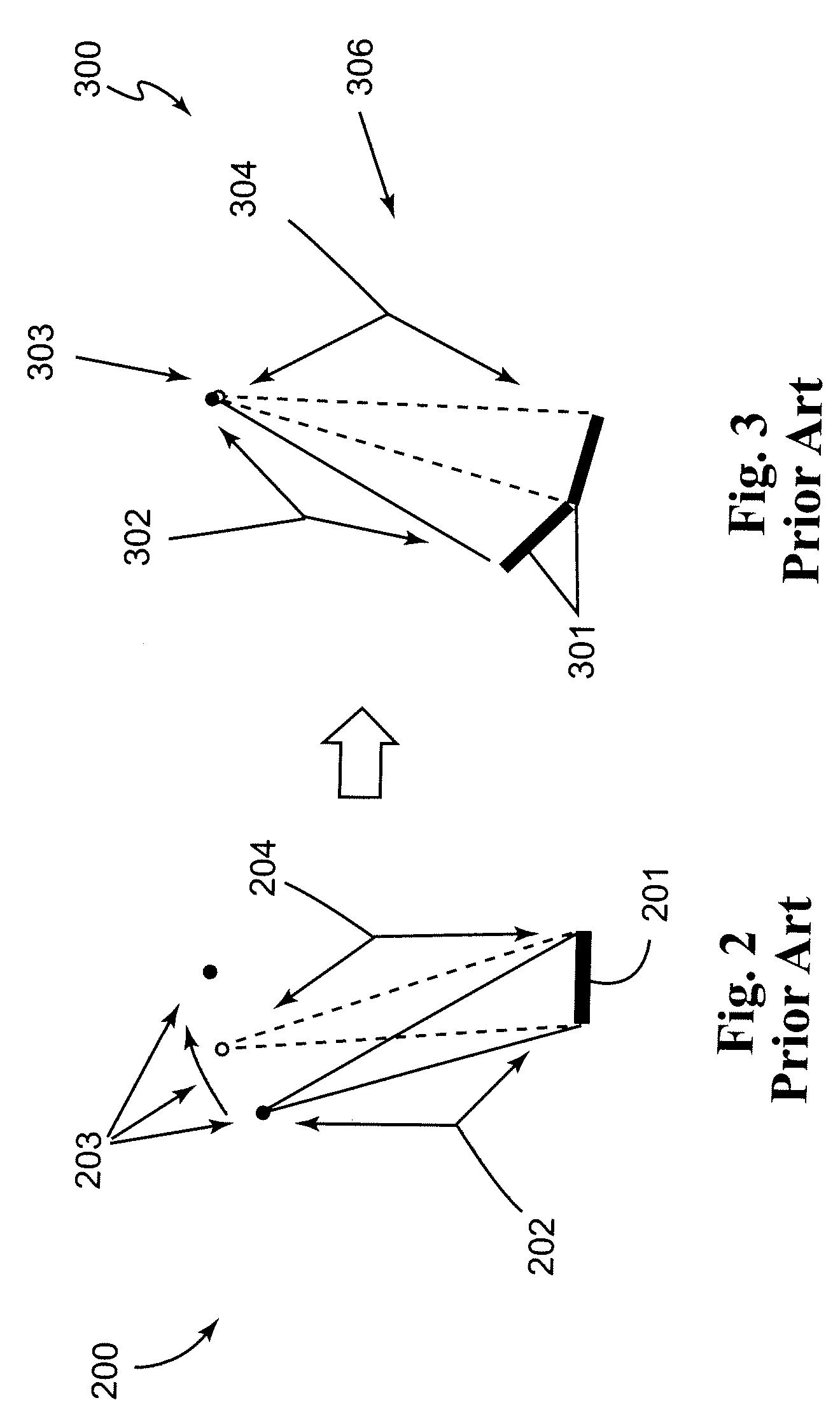Method for analytic reconstruction of cone-beam projection data for multi-source inverse geometry CT systems
a technology of inverse geometry and projection data, applied in tomography, instruments, nuclear engineering, etc., can solve the problems of ct data being fundamentally incomplete, cone-beam artifacts, artifacts that occur and get worse, etc., to achieve the effect of reducing scan coverage, reducing image quality, and reducing the number of sources
- Summary
- Abstract
- Description
- Claims
- Application Information
AI Technical Summary
Benefits of technology
Problems solved by technology
Method used
Image
Examples
Embodiment Construction
[0038]Embodiments of the present invention disclose techniques for analytically reconstructing cone beam projection datasets obtained from multiple longitudinally offset x-ray sources, in an IGCT system. In particular, embodiments of the present invention disclose techniques for efficiently combining one or more cone beam projection datasets from multiple longitudinally offset x-ray sources, to produce accurate reconstructions of an image object, when only less than a full scan of data is available for reconstruction.
[0039]One technique for combining projection datasets obtained from multiple longitudinally offset x-ray sources, from an IGCT system (as shown in FIG. 2), is to reconstruct desired image slices for one or more longitudinally offset x-ray sources and then combine the reconstructed slices to generate a reconstructed image volume. FIG. 6 illustrates a technique for combining information from one or more longitudinally distributed x-ray sources. Referring to FIG. 6, image ...
PUM
 Login to View More
Login to View More Abstract
Description
Claims
Application Information
 Login to View More
Login to View More - R&D
- Intellectual Property
- Life Sciences
- Materials
- Tech Scout
- Unparalleled Data Quality
- Higher Quality Content
- 60% Fewer Hallucinations
Browse by: Latest US Patents, China's latest patents, Technical Efficacy Thesaurus, Application Domain, Technology Topic, Popular Technical Reports.
© 2025 PatSnap. All rights reserved.Legal|Privacy policy|Modern Slavery Act Transparency Statement|Sitemap|About US| Contact US: help@patsnap.com



